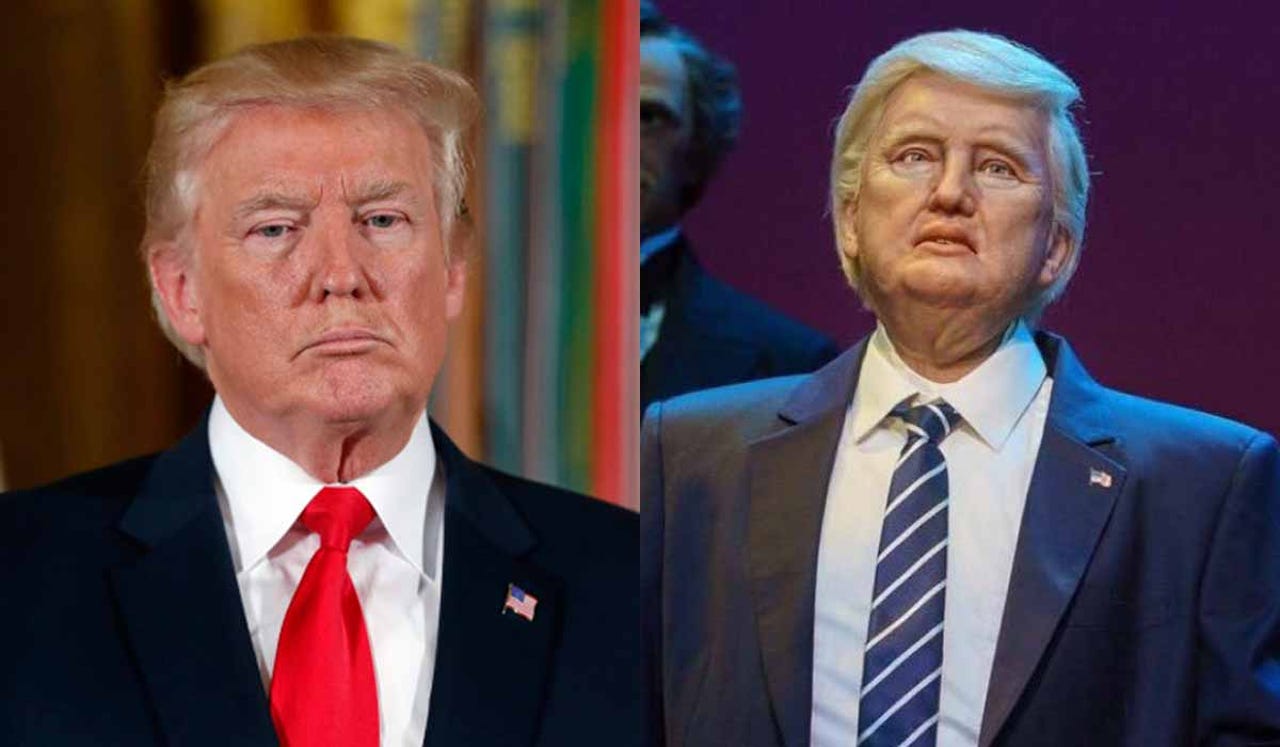Disney's hideous Trump robot is a perfect illustration of the uncanny valley problem facing robot designers


There's a new addition to Disney World's Hall of President's attraction: An animatronic President Trump.
In a year of deep division, contentious politics, and escalating tensions, it's nice to find something everyone seems to agree on: This thing is hideous.
The reaction on late night shows and in the press has been swift, and it highlights a real issue for robiticists: The problem of the uncanny valley.
The concept, first identified by robotics professor Masahiro Mori in 1970, holds that the more an object appears human without quite nailing the look and mannerisms, the more uncomfortable it makes us. The word uncanny, which we use colloquially to mean something like impressive and unlikely (as in, "the resemblance is uncanny") literally means strange in an unsettling way.
Valley refers to the drop and subsequent rise in our emotional response as an object approaches humanlike, as illustrated in the graph below.
What's interesting about this graph, and, indeed, what has guided much robotics design to date, is that likability isn't markedly different when you compare robots with relatively low mechano-humanness scores to those with near-perfect scores.
In other words, humans are more than fine with robots that look like robots and have just a few features suggestive of humanness, such as crude eyes and a mouth. It's when robots look entirely mechanical or when they look almost human that we recoil.
Consider Jibo, the desktop personal assistant that debuted this year. Jibo's face is a screen with a single animated eye. The robot is very roughly proportioned like a person -- it has a "head" and a "torso." It also moves in a way suggestive of human emotional responses, swiveling its head and base to convey curiosity, confusion, or excitement.
Read also: Tipping point: 2017 was a record-shattering year for robotics
No one would say Jibo looks human, but it nails the first peak of the graph. During interaction, the robot comes across as genuinely cute and endearing.
On the lower end of the mechano-humanness spectrum, take Handle, the robot that Boston Dynamics founder and CEO Marc Raibert actually called "nightmare inducing" during its unveiling.
Handle has more accurate human proportionality than Jibo, but it doesn't have a face. It also moves in a decidedly non-human way. This is the faceless gliding ghoul you may see just before death. Not very likable.
But if likability is the goal, roboticists can do (and clearly have done) WAY worse. There are lots of examples of human-like robots that miss mark. The Actroid, developed by the University of Osaka, comes to mind.
More recently you've probably read about Sophia, developed by Dr. David Hanson. Sophia is much closer than the Actroid to human-looking, and people tend to have mixed reactions to Hanson's robot. To my eye, though, it's still very much in the valley, particularly when it moves.
The problem is that human motion, from the nuance of bipedal gait to the intricacies of the musculature of our face, is very difficult to replicate mechanically. And while materials have come a long way, silicon simply doesn't move the way skin and flesh do.
The fact remains that roboticists can make a likable device by discarding efforts to mimic the human look, opting for much cleaner aesthetics instead. For now, at least, that's a much more feasible path forward for robotics design.
I have a hunch Disney is going to respond to the backlash over their animatronic Trump with some revisions to the robot. So, if you want to see something truly uncanny, now's your chance.